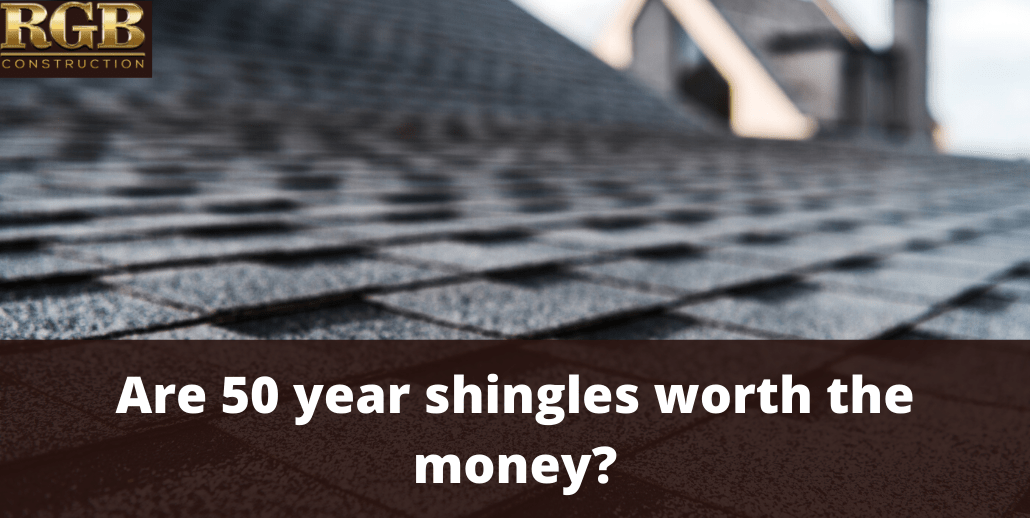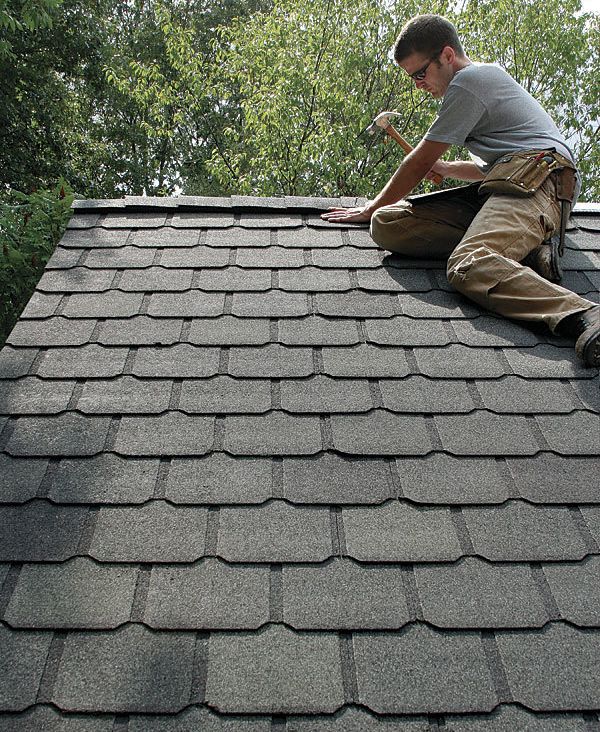In the world of roofing, the durability and longevity of shingles are of utmost importance. This article aims to provide you with a comprehensive understanding of the longevity of 50 year shingles. By delving into the factors that affect their lifespan and exploring the technologies behind their construction, you will gain valuable insights into the true extent of their endurance. So, how long do these acclaimed 50 year shingles truly last? Let us uncover the answer and unravel the mysteries of their longevity.

This image is property of digitalroofingcompany.com.
Factors that Affect the Longevity of 50 Year Shingles
When investing in a new roof, it is important to consider the factors that can impact the lifespan of 50 year shingles. While these shingles are designed to last for several decades, their longevity can be influenced by various factors. Understanding these factors can help homeowners make informed decisions and maximize the lifespan of their shingles. The key factors that affect the longevity of 50 year shingles include the quality of materials, installation quality, climate and weather conditions, maintenance practices, and proper ventilation.
Quality of Materials
The quality of materials used in the production of 50 year shingles plays a significant role in determining their longevity. Different manufacturers may use varying materials, and it is important to choose shingles made from high-quality materials that are known for their durability. The types of materials used, the thickness and weight of the shingles, their resistance to UV rays, and the reputation of the manufacturer are all factors that affect the quality of materials and ultimately the lifespan of the shingles.
Installation Quality
Even the highest-quality shingles cannot reach their full potential if they are not installed properly. Professional installation is essential to ensure that the shingles are installed correctly and that all necessary steps are taken to protect them from damage. Proper roof deck preparation, correct nailing techniques, and the use of proper flashing and sealing are crucial for the longevity of 50 year shingles. Homeowners should consider hiring a trusted and experienced roofing contractor to ensure proper installation.
Climate and Weather Conditions
The climate and weather conditions in a particular area can have a significant impact on the longevity of 50 year shingles. Extreme temperatures, high winds and storms, hail and impact resistance, as well as moisture and mold prevention, are all factors that can affect the lifespan of shingles. Areas with harsh climates or frequent severe weather events may require additional measures, such as wind-resistant installation techniques or impact-resistant shingles, to ensure the durability and longevity of the roof.
Maintenance Practices
Regular maintenance is essential for keeping 50 year shingles in optimal condition and maximizing their lifespan. Homeowners should schedule regular inspections of their roof to identify any potential issues and address them promptly. Additionally, keeping gutters and roof surfaces free from debris, preventing moss and algae growth, and replacing damaged shingles in a timely manner are all important maintenance practices that can help extend the lifespan of 50 year shingles.
Proper Ventilation
Proper ventilation is often overlooked but plays a crucial role in the longevity of 50 year shingles. Adequate attic ventilation helps prevent heat buildup, which can cause shingles to deteriorate prematurely. Additionally, proper ventilation helps control moisture levels, reducing the risk of mold and rot. Homeowners should consider installing exhaust ventilation systems and ensuring that their attic spaces are properly ventilated to enhance the longevity of 50 year shingles.
The Impact of Material Quality on Shingle Longevity
The quality of materials used in the production of 50 year shingles directly affects their longevity. When selecting shingles, it is important to consider the different types of materials available, their thickness and weight, their resistance to UV rays, and the reputation of the manufacturer.
Types of Materials Used
50 year shingles can be made from various materials, including asphalt, fiberglass, and composite materials. Each material has its own unique characteristics and durability. Homeowners should choose shingles made from high-quality materials that are known for their longevity and resistance to various weather conditions.
Thickness and Weight
The thickness and weight of shingles are indicators of their durability and resistance to damage. Thicker and heavier shingles are generally more durable and have a longer lifespan. A thicker shingle also provides better protection against hail, impact, and extreme weather conditions.
Resistance to UV Rays
Shingles that are resistant to UV rays are less likely to deteriorate and fade over time. UV rays from the sun can cause shingles to lose their protective granules and become brittle. Opting for shingles with enhanced UV resistance can help prolong their lifespan and maintain their appearance.
Reputation of the Manufacturer
The reputation of the manufacturer is an important consideration when selecting 50 year shingles. Established manufacturers with a history of producing high-quality and durable roofing materials are more likely to provide shingles that stand the test of time. Homeowners should research and choose a reputable manufacturer to ensure they receive a reliable and long-lasting roofing product.
The Importance of Installation Quality
Proper installation is paramount to the longevity of 50 year shingles. Hiring a professional roofing contractor to handle the installation ensures that all necessary steps are taken to protect the shingles from damage and to ensure their proper functionality.
Professional Installation vs. DIY
While some homeowners may consider tackling the installation of 50 year shingles themselves, it is highly recommended to hire professionals. Professional roofing contractors have the knowledge, experience, and specialized tools needed to ensure a proper installation. They can also provide warranty coverage for both the materials and the workmanship, giving homeowners peace of mind.
Roof Deck Preparation
Before installing the shingles, the roof deck must be properly prepared. This includes removing any existing roofing materials, repairing any damaged sections, and ensuring a smooth and solid surface for the new shingles. Proper roof deck preparation ensures that the shingles have a stable foundation and helps prevent premature deterioration.
Correct Nailing Techniques
Using the correct nailing techniques is essential for the longevity of 50 year shingles. Overdriven or underdriven nails can damage the shingles or cause them to become loose, leading to water infiltration and premature failure. Professional roofing contractors are trained in proper nailing techniques and have the expertise to ensure the shingles are securely fastened.
Proper Flashing and Sealing
Proper flashing and sealing are critical for preventing water intrusion and maintaining the integrity of the shingles. Flashing should be installed around roof penetrations and at the junctions between different roof sections to prevent water from seeping underneath the shingles. Adequate sealing of all roofing components helps create a watertight barrier and enhances the longevity of the shingles.
Climate and Weather Conditions
The climate and weather conditions in a particular area have a significant impact on the lifespan of 50 year shingles. Extreme temperatures, high winds and storms, hail and impact resistance, as well as moisture and mold prevention, are all factors that should be considered.
Extreme Temperatures
Extreme temperatures, both hot and cold, can cause shingles to expand and contract, leading to material fatigue and potential cracking. Shingles that are specifically designed to withstand temperature extremes will have a longer lifespan in such climates.
High Winds and Storms
Areas prone to high winds and storms require shingles that are resistant to wind uplift and damage. Installing shingles with proper wind ratings and using wind-resistant installation techniques, such as nailing shingles in high-wind zones, can help ensure their durability during severe weather events.
Hail and Impact Resistance
Hailstorms can cause significant damage to shingles, including cracking, punctures, and granule loss. Hail-resistant shingles are designed to withstand impact and minimize damage. Homeowners in hail-prone regions should consider investing in shingles with higher impact ratings to protect their roofs from hail damage.
Moisture and Mold Prevention
Excessive moisture can lead to mold, rot, and other issues that can compromise the lifespan of shingles. Choosing shingles with enhanced moisture resistance and ensuring proper ventilation and drainage systems are in place can help prevent moisture-related problems and extend the longevity of the roof.
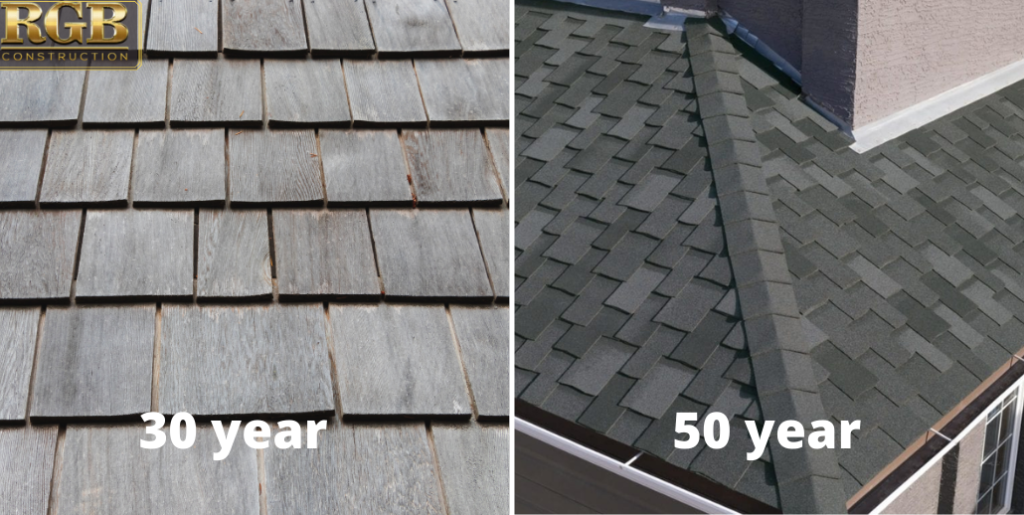
This image is property of rgbconstructionservices.com.
Maintenance Practices for Long-Lasting Shingles
Proper maintenance is crucial for maximizing the lifespan of 50 year shingles. Regular inspections, cleaning gutters and debris, preventing moss and algae growth, and promptly replacing damaged shingles are all important maintenance practices.
Regular Inspections
Regular inspections allow homeowners to identify any issues with their shingles before they become major problems. Inspecting the roof for any signs of damage, deterioration, or wear and tear should be done at least once a year. Additionally, post-storm inspections can help identify any damage that may have occurred during severe weather events.
Cleaning Gutters and Debris
Clogged gutters and debris can prevent proper water drainage, leading to water accumulation and potential damage to the shingles. Regularly cleaning gutters and removing any debris from the roof surface ensures that water flows freely, reducing the risk of leaks and extending the lifespan of the shingles.
Preventing Moss and Algae Growth
Moss and algae growth on shingles can accelerate deterioration and compromise their integrity. Preventing this growth is essential for maintaining the longevity of the roof. Regular cleaning and treating the roof with moss and algae inhibitors can help prevent their growth and protect the shingles.
Replacing Damaged Shingles
Promptly replacing damaged or missing shingles is crucial for preventing further damage and maintaining the overall integrity of the roof. Damaged shingles can allow water infiltration, leading to leaks, moisture damage, and potential structural issues. Timely replacement of damaged shingles helps ensure that the roof remains durable and long-lasting.
The Role of Proper Ventilation
Proper ventilation is often overlooked but plays a crucial role in the longevity of 50 year shingles. Adequate attic ventilation helps prevent heat buildup, controls moisture levels, and prolongs the lifespan of the shingles.
Attic Ventilation Importance
Attic ventilation allows for the exchange of air between the attic and the exterior, preventing heat and moisture buildup. Excessive heat in the attic can cause shingles to overheat, leading to premature aging and deterioration. Proper ventilation helps regulate the temperature and humidity levels in the attic, creating a more conducive environment for the shingles.
Preventing Heat Buildup
Heat buildup in the attic can cause shingles to deteriorate prematurely. Installing proper ventilation systems, such as ridge vents, soffit vents, or powered ventilation fans, can help remove excess heat from the attic and reduce the strain on the shingles.
Moisture Control
Moisture control is essential for preventing mold, rot, and other moisture-related issues that can compromise the lifespan of the shingles. Proper attic ventilation helps remove excess moisture, preventing its accumulation and reducing the risk of damage to the shingles and other roofing components.
Exhaust Ventilation Systems
Exhaust ventilation systems, such as powered attic fans or turbines, can help enhance the effectiveness of attic ventilation. These systems work by actively removing hot air from the attic, ensuring that the shingles are exposed to cooler temperatures. Homeowners should consider installing these systems to improve ventilation and maximize the lifespan of their 50 year shingles.
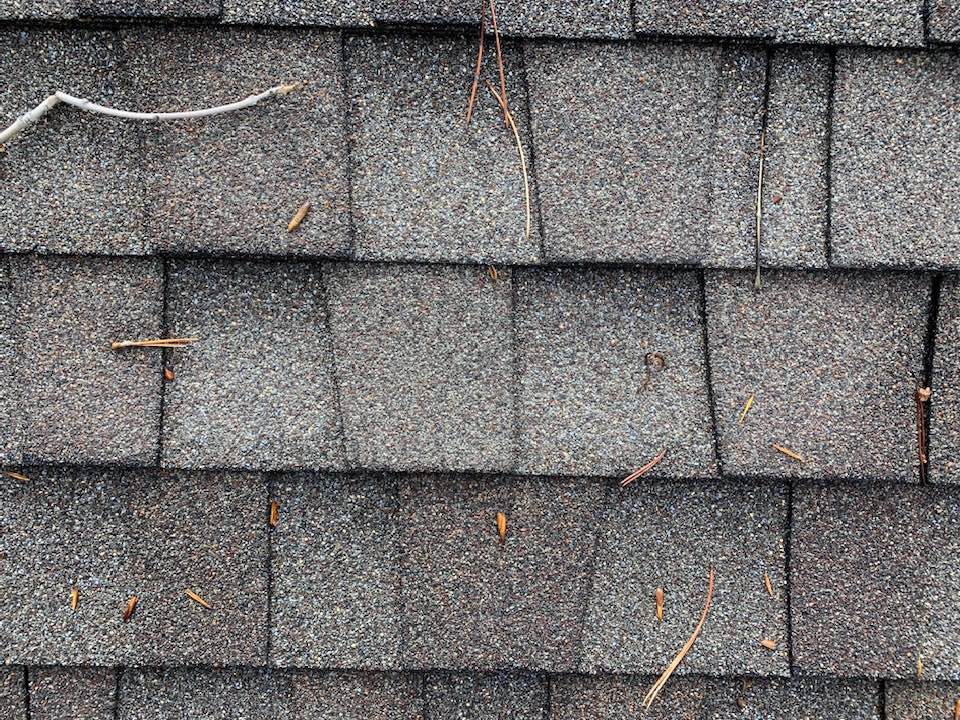
This image is property of digitalroofingcompany.com.
Comparing 50 Year Shingles to Other Types
When considering 50 year shingles, it is helpful to compare them to other types of roofing materials commonly available. Understanding the differences between 50 year shingles, 30 year shingles, architectural shingles, metal roofing, and slate roofing can help homeowners make informed decisions about which option is best suited for their needs.
30 Year Shingles
As the name suggests, 30 year shingles are designed to last for approximately three decades. While they offer a relatively long lifespan, they may not have the same level of durability and resistance as 50 year shingles. Homeowners who desire a longer-lasting roof should consider investing in 50 year shingles for enhanced durability and longevity.
Architectural Shingles
Architectural shingles, also known as dimensional or laminate shingles, are designed to provide a more high-end and aesthetically pleasing appearance. They are typically thicker and heavier than standard asphalt shingles, offering improved durability and resistance to wind and impact. However, their lifespan may be similar to 50 year shingles, making them a viable alternative for homeowners seeking long-lasting roofing materials.
Metal Roofing
Metal roofing materials, such as steel or aluminum, offer exceptional durability and longevity. Metal roofs can last for 50 years or more, making them a popular choice for homeowners seeking a long-lasting roof. However, metal roofs can be more expensive than shingles and may require specialized installation techniques. They also have different aesthetic qualities and may not be suitable for every architectural style.
Slate Roofing
Slate roofing is known for its elegance and durability. Made from natural stone, slate roofs can last for over a century when properly maintained. While the longevity of slate roofing is unmatched, it is also more expensive and requires specialized installation expertise. Homeowners interested in slate roofing should be prepared for the higher cost and potential challenges associated with installation and maintenance.
Warranty and Lifespan Expectations
Understanding the manufacturer warranty and the factors that can affect the lifespan expectations of 50 year shingles is important for homeowners. Manufacturers typically provide warranties that cover defects in materials or workmanship, but it is crucial to be aware of common limitations and factors that can affect the lifespan of the shingles.
Understanding Manufacturer Warranty
Manufacturer warranties for 50 year shingles generally cover a specified period, such as 50 years, and provide protection against defects or premature failure. It is important for homeowners to read and understand the warranty terms and conditions to know what is covered and what is not.
Common Warranty Limitations
Manufacturer warranties may have limitations or exclusions that homeowners should be aware of. These limitations can include inadequate maintenance practices, improper installation, and specific weather events. It is important to follow the manufacturer’s guidelines for maintenance and installation to ensure warranty coverage.
Factors Affecting Lifespan Expectations
Several factors can affect the lifespan expectations of 50 year shingles. These factors include the quality of materials, installation quality, climate and weather conditions, maintenance practices, and proper ventilation. Homeowners should consider these factors when determining the expected lifespan of their shingles and adjust their maintenance routines accordingly.
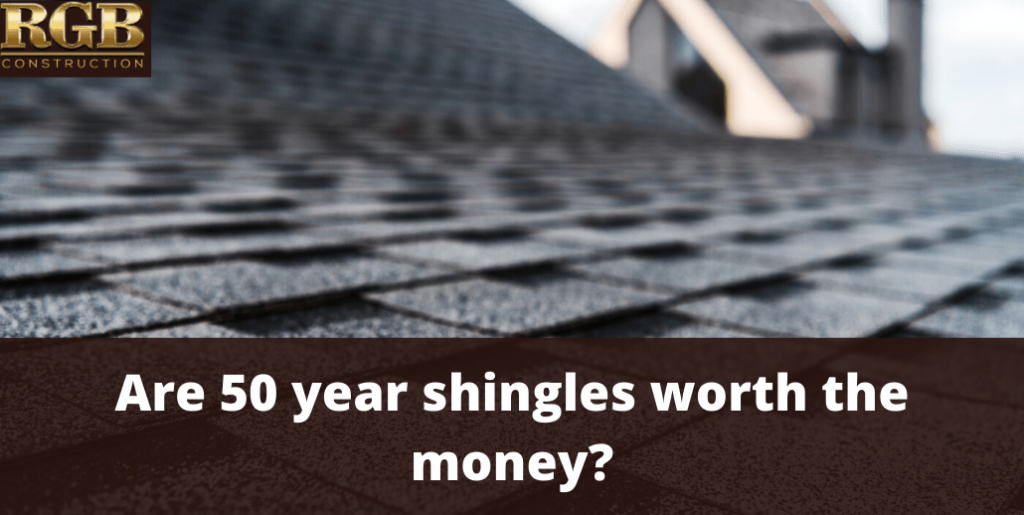
This image is property of rgbconstructionservices.com.
Signs of Aging and Replacement Needs
Despite their long lifespan, 50 year shingles may eventually show signs of aging and require replacement. Homeowners should be aware of the common signs of aging and know when it is time to replace their shingles.
Curling and Buckling
Curling and buckling of shingles can indicate that they are reaching the end of their lifespan. Over time, exposure to sunlight and weather can cause shingles to curl or buckle, compromising their functionality and protective qualities. If a significant number of shingles are curling or buckling, it may be time for a roof replacement.
Missing and Damaged Shingles
Missing or damaged shingles can expose the underlying layers of the roof to water infiltration and damage. If multiple shingles are missing or damaged, it is important to have them replaced promptly to prevent further damage and potential leaks.
Granule Loss
Granule loss occurs naturally over time as shingles age. However, excessive granule loss can signal that the shingles are no longer providing adequate protection. Homeowners should keep an eye out for excessive granule loss and consider replacing their shingles if this becomes a recurring issue.
Leaks and Water Damage
Leakage and water damage inside the home are clear signs that the shingles are no longer effectively protecting the roof. If water stains or leaks appear on the ceilings or walls, it is crucial to address the issue promptly and consider a roof replacement to prevent further damage.
Conclusion
The longevity of 50 year shingles depends on several key factors, including the quality of materials, installation quality, climate and weather conditions, maintenance practices, and proper ventilation. By choosing high-quality materials, ensuring professional installation, considering climate factors, practicing regular maintenance, and providing proper ventilation, homeowners can maximize the lifespan of their 50 year shingles. Understanding common signs of aging and knowing when to replace the shingles will help maintain a durable and long-lasting roof for years to come.
This image is property of d4c5gb8slvq7w.cloudfront.net.
